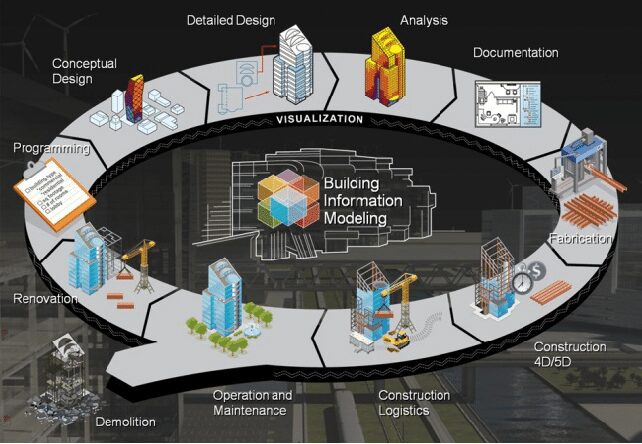Embracing Building Information Modelling (BIM) for Construction Excellence
Building Information Modelling (BIM): BIM is a revolutionary digital process that has
transformed the construction industry by streamlining project management, enhancing
collaboration, and improving overall efficiency. This advanced technology integrates 3D
modelling, data management, and communication tools to create a comprehensive and
interactive virtual representation of a building.
Let’s explore the key benefits of BIM in construction:
- Collaboration and Communication: BIM breaks down traditional silos in the
construction process by fostering cross-disciplinary collaboration among architects,
engineers, contractors, and other stakeholders. Real-time collaboration and shared
access to project data ensure everyone is on the same page, reducing errors and
misunderstandings. - Visualization and Design Validation: BIM’s 3D modelling capabilities enable
stakeholders to visualize the building before construction begins, allowing for better
design understanding and validation. Clash detection features identify and resolve
conflicts between various building elements, reducing costly rework during
construction. - Project Planning and Scheduling: BIM’s 4D capabilities integrate time-based
scheduling into the model, providing a visual representation of the construction
process. This aids in better project planning, construction sequencing, and resource
allocation, leading to optimized project timelines. - Accurate Cost Estimation and Budget Control: BIM’s 5D capabilities link cost data to
individual model elements, providing real-time and precise cost estimations
throughout the project. This helps in controlling budgets, reducing the risk of cost
overruns, and optimizing material procurement. - Sustainability and Energy Efficiency: BIM plays a crucial role in promoting
sustainability in construction projects. By analysing environmental impacts and
energy efficiency, BIM facilitates informed decision-making that leads to more eco-
friendly building designs. - Facility Management and Operation: BIM benefits extend beyond construction,
providing valuable insights for building operations and facility management. During
handover, BIM offers comprehensive data to facility managers, streamlining
maintenance and operations.
In conclusion, Building Information Modelling (BIM) has transformed the construction
industry by enhancing collaboration, improving design validation, and enabling accurate
cost estimation. The adoption of BIM technology has proven to be a game-changer,
optimizing project planning, promoting sustainability, and facilitating efficient facility
management. Embracing BIM empowers construction professionals to create better
buildings, reduce costs, and pave the way for a more sustainable future in the construction
industry.
Disclaimer: This content is provided solely for your review. Erusu Consultants takes no liability for this article. The reader is advised to form their own opinion. Please consult a Structural Engineer before making any final decisions.






